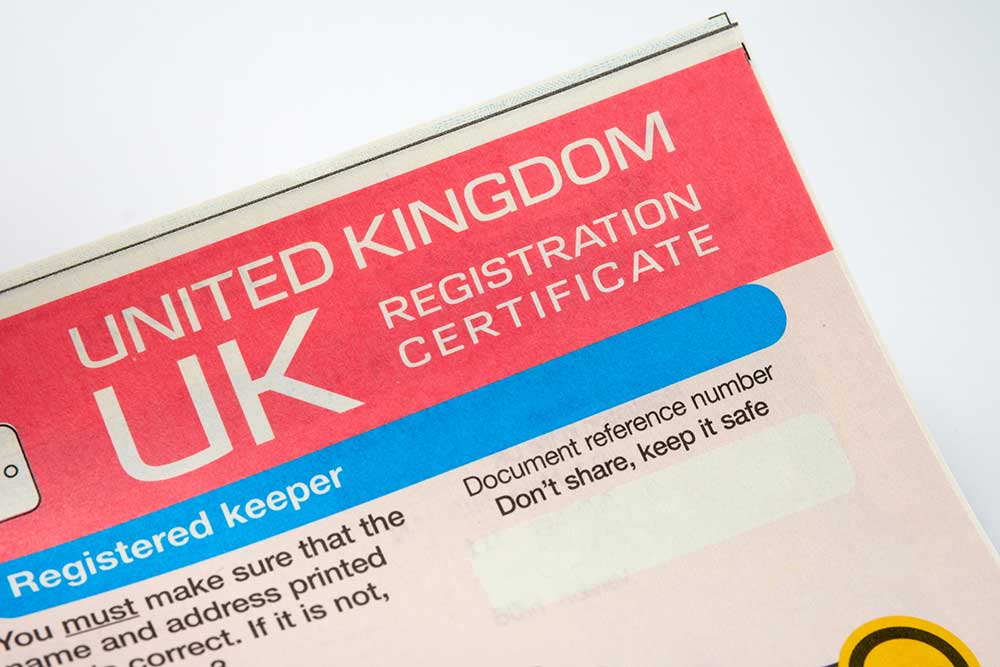Car tax and top things that increase your road tax


Vehicle Excise Duty (VED) which is also known as vehicle tax or car tax is an annual tax that you pay to keep your vehicle on the road legally. It’s calculated using the factors mainly, on how old your vehicle is and the emission of Co2 gases.
Registered vehicles that are not being used or parked on public roads and which have been taxed since 31 January 1998, must be covered by a Statutory Off Road Notification (SORN) to avoid VED. In 2016, VED generated approximately £6 billion for the exchequer. A car tax was first introduced in Britain in 1888.
The first-year car tax rate is based on CO2 emissions, broken down into several bands. For diesel cars from 1 April 2018, owners are charged a higher first-year rate unless they meet RDE2 emission standards. For all cars registered from 1 April 2020, the first-year car tax rate is likely to be higher than previous years, as official CO2 measurements have risen due to changes in official tests. The standard car tax of the car rate kicks in after the first year. From April 2021, you’ll pay £155 for petrol and diesel cars, and £145 for hybrids and alternative fuel cars as car tax. Zero-emission cars (such as electric vehicles) are exempt from car tax.
If your car cost more than £40,000 when bought new, you have to pay an extra £335 (April 2021 rate, see below) car tax per year for five years, on top of the standard rate. Zero-emission cars are now also exempt from the £40,000 rule as of 1 April 2020. This includes existing owners. New rules of car tax are not being backdated to older cars; they will continue along with the previous tax system. Below we explain the post-2017 rules in more detail, or you can skip straight to the table of car tax rates.
The rate of car tax you’ll pay is based on the date the car was first registered, which is why this is important. The first registration date does not alter with subsequent owners. For instance, a car bought new and registered on 1 July 2016, and then sold to someone else on 1 August 2017, will always have a first registration date of 1 July 2016. You can find the first registration date in your car’s V5C document (your proof of ownership document). But to save you digging that out, the easiest way to check is to go to the DVLA’s ‘get vehicle information service and enter your registration. This free service will reveal the car’s first registration date along with other useful information, such as when the MOT is due to expire and the car’s European emission status (e.g. Euro 6).
There are three main car tax for cars that were registered as new after 1 April 2017: The first-year car tax is based on the amount of CO2 (carbon dioxide) your car produces and is higher for any diesel cars that don’t meet RDE Act 2/Euro 6d emission levels. Find out more diesel car rates. After that, a standard rate applies. Petrol and diesel car owners will pay the car tax from April 2021, £155 a year; it’s £145 for alternative-fuel cars such as hybrids. This assumes you pay as a single, 12-month payment; rates are a little higher if you pay in instalments. Owners of cars that cost more than £40,000 have to pay an extra £335 a year in addition to the standard rate, for five years.
After the first year, owners of cars that cost more than £40,000 have to pay an additional annual supplement of £335 for five years – adding up to £1,675 in total.
Electric cars (and hydrogen fuel-cell cars such as the Hyundai Nexo) are zero-emission vehicles, which are currently exempt from paying any form of car tax. Electric cars registered before April 2017 are also exempt from car tax. The £40,000 expensive-car rule, explained above, initially applied to electric cars. For example, if you have bought a new Tesla Model X (an electric car that costs £75,000), you have to pay this supplement from the second to the sixth year of ownership. However, it was announced in the 2020 Budget that owners of zero-emission cars bought before 31 March 2025 would no longer have to pay that supplementary rate. Unusually, this exemption from the supplement also applies to existing owners.
The car taxes are slightly different for owners of alternative-fuel cars. These are vehicles that don’t run purely on diesel or petrol and include: hybrids, plug-in hybrids, liquefied petroleum gas (LPG), cars compressed natural gas (CNG) cars and biofuel cars (bioethanol or biodiesel). Drivers of alternative-fuel cars pay £10 less than petrol and diesel owners in the first year. They then pay £145 every year after.
Anybody who buys a new diesel car that doesn’t comply with RDE Act 2 (RDE2) emission testing pays a higher amount of car tax in the first year of ownership. New RDE tests came into force in September 2017, but not all new cars had to comply with these new testing procedures until 1 September 2019. The rules are not being backdated; they only affect those buying a new diesel car that was first registered on or after 1 April 2018.
Any cars first registered as new after 1 March 2001, but before 1 April 2017, continue to be taxed at their previous, respective car tax rates. These are based on official CO2 emissions. The amount of CO2 your car produces puts it into one of 13 bands. Cars that emit the least amount of CO2, and are currently exempt from paying any car tax throughout the life of the car. Low-emission cars (producing up to 100g/km CO2) registered before 1 April 2017 were not liable for car tax. For cars registered from 1 April 2017, this exemption no longer applies. The car tax rate also tends to increase year on year in line with RPI (Retail Price Index).
These car tax rates apply to cars registered from 1 March 2001. Cars registered before this date are charged based on their engine size; as of April 2021, those with engines smaller or equal to 1549cc now pay £170 a year, and those with larger engines pay £280 a year. A rolling 40-year car tax exemption for classic vehicles applies from 1 April 2015. It means any vehicle built 40 or more years ago will be exempt from car tax on an automatic rolling basis on 1 April each year.
Excluding zero-emission cars, on which you pay no tax at all, lower-emission cars tend to have relatively higher car tax rates (for the same car type) under the new system from the outset. Owners of higher-emission cars pay more in the short term but might be better off in the longer term. For example, under the current system and applying the latest rates (from April 2021), you would pay £1,315 of car tax over 10 years for the Toyota Prius Plug-in hybrid. The cleanest car on the table, it has a remarkably low CO2 figure of just 28g/km. Under the previous system, it would have been exempt from car tax thanks to its low emissions.
The Skoda Kodiaq has a CO2 figure that’s 5.5 times higher than the Prius plug-in hybrid, officially emitting 155g/km of CO2. Under the current system, its owners will pay £1,950 of car tax over 10 years, noticeably more than for the Prius Plug-in. However, under the older system, owners would end up paying £125 less over the same period, meaning that anyone buying a more polluting car today saves money on what they would have paid under the pre-2017 car tax system. The more polluting the car, the higher the saving compared with the older car tax system. The Ford Ranger’s CO2 figure of 231g/km is more than eight times higher than for the Prius plug-in hybrid. Under the current system, owners will pay £3,305 over 10 years. But that’s still a saving of £2,845 compared with what owners of an equally polluting car would pay if it was first registered before April 2017.
For those buying a high-polluting car under the current system, you’ll pay more on car tax compared with a low-polluting car. But you’ll still save money compared with the previous car tax system – thousands of pounds if you’re buying a very polluting car. Those buying a low-emission vehicle might pay less compared with those buying high-polluting cars, but owners are comparatively worse off if they buy a newer, cleaner low-emission car that was first registered after April 2017.
The car tax rates did not increase in 2020 but the bands changed, so some car owners might have found themselves faced with a hefty increase. That’s because of changes to the way CO2 is measured. The result is that someone buying a new car first registered from April 2020 could have found themselves paying substantially more car tax in the first year compared with someone who bought the same car just before April 2020. As of April 2020, first-year car tax is calculated based on Worldwide Harmonised Light Vehicle Test Procedure (WLTP) test results for CO2 emissions. Previously, it was calculated on the less-representative New European Driving Cycle (NEDC) test, which gave less realistic (and typically lower) CO2 emissions.
First-year car tax rates, which are based on official CO2 emissions, were adjusted for the change. As an example, if testing had continued under the old NEDC test, which measured a car as producing 135g/km CO2, the owner would have paid £215 in their first year. However, if that same car was bought just after April 2020 and its official CO2 output had been adjusted to 155g/km following the adoption of WLTP CO2 values, the owner of that same car would have had to pay £540 as it moved up to the next band. That’s an increase of £325. The standard rates that apply from the second year of a car’s life onwards are unaffected.
If you buy a used car, you can no longer transfer any remaining car tax, so you need to tax the car before you can use it. If you sell a car, you will get an automatic refund for any remaining car tax – as long as you have notified the DVLA of the sale. However, you will only be refunded for any full calendar months remaining. That means if you sell your car one week into the month, both you and the new owner will effectively have to tax it for the remainder of that month


